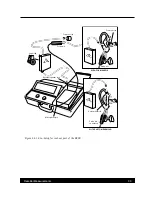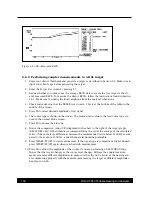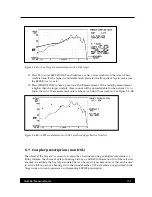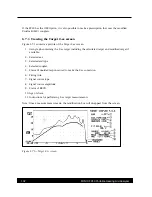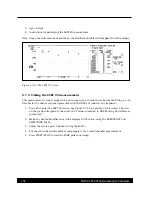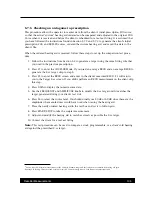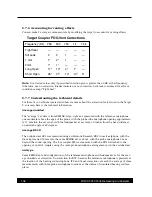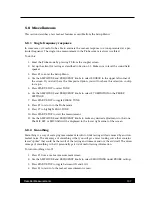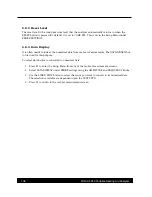
Real-Ear Measurements
113
B. Aided—Measurement of “better” ear
Same setup as A, except…
• Complete aid in place in better ear and set at use gain
• Both transmitters on
The difference curve, labeled “Insertion Gain” on the screen, shows the overall benefit of inserting
the hearing aid.
5.9.2.4 Insertion Loss to the “Good” Ear (CROS)
When a CROS aid has been prescribed to overcome a severe unilateral high-frequency loss, you
may want to ensure that inserting an open earmold into the good ear has not significantly attenu-
ated the acoustic transmission to the good ear.
Note:
Since this is a monaural measurement, a 45º position of the loudspeaker is recommended.
Two Measurements
A.
Unaided
—Unoccluded Ear canal Response of “good” ear
Set up the FP40 analyzer as follows.
• Reference microphone ON
• Sound field LEVELED
• Unaided CUSTOM
• Reference microphone over pinna of good ear
• Probe microphone inside unoccluded ear canal of good ear
• Loudspeaker at 45º toward good ear, 12 inches from sur-
face of head
B.
Aided
—Occluded Response of “good” ear.
Same setup as A, except
• Earmold in place in good ear
• Hearing aid is turned off
The difference curve, labeled “Insertion Gain” on the screen, shows insertion loss, if any, caused by
inserting the earmold into the good ear.
REFERENCE MIC
PROBE MIC
12"
SPEAKER
GOOD
EAR
BAD
EAR

